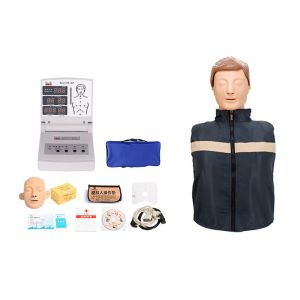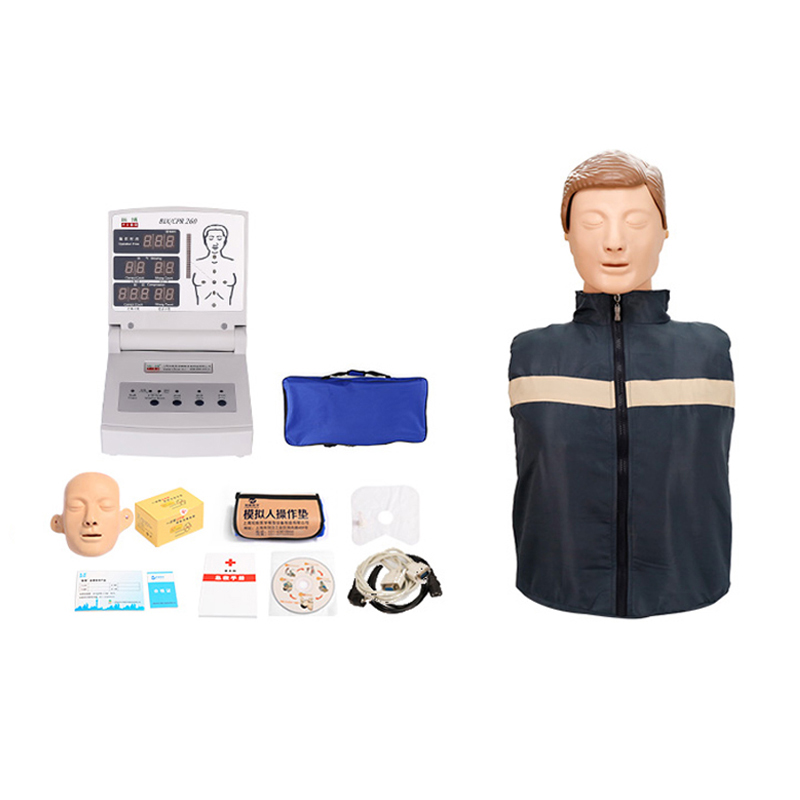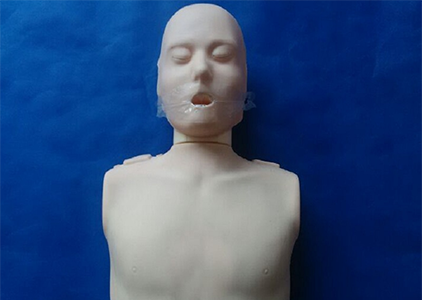
The application of half-body cardiopulmonary resuscitation model in clinical first aid teaching is remarkable, which has brought significant improvement and promotion to medical education and clinical skill training. The following is a detailed analysis of its application effect:

Skills Improvement:
Half body cardiopulmonary resuscitation (CPR) model can simulate the real CPR operation process, and provide a safe and effective practice platform for medical professionals such as medical students, interns and clinicians. Through repeated practice, they are able to master the skills of CPR in a simulated environment, including the correct position, depth and frequency of compressions, and effective rescue breathing. This improvement in skills not only helps them perform more confidently and accurately in real emergency situations, but also improves the survival rate of patients.
Operating accuracy:
Half-body CPR models are often equipped with detailed feedback systems that reflect key metrics such as the operator's compression intensity, frequency, and depth in real time. This allows the operator to understand the effect of their operation in a timely manner and make adjustments and improvements based on feedback. This immediate feedback mechanism helps to improve the accuracy of the operation and reduce the occurrence of incorrect operation.
Safety awareness training:
When training with a half-body cardiopulmonary resuscitation model, the operator needs to strictly follow the operating codes and procedures to ensure the safety and effectiveness of the operation. This standardized training helps to cultivate the safety awareness of the operators, so that they pay more attention to the operation standards and safety measures in the actual first aid work, and reduce the occurrence of accidents.
Teaching effect improvement:
The application of half body cardiopulmonary resuscitation model makes the clinical first aid teaching more vivid, intuitive and interesting. Compared with the traditional way of combining theoretical teaching and practical operation, teaching with model is more attractive and can stimulate students' learning interest and enthusiasm. At the same time, the model can also provide more abundant teaching resources, such as simulated cases of different difficulty levels, operation videos, etc., to meet the needs of different learners.
Data support:
Some advanced half-body CPR models are also able to record and analyze the operator's operational data, such as the number of compressions, depth of compressions, breathing rate, and so on. These data can be used to assess the operator's skills and level of operation and provide a scientific basis for teaching. At the same time, by comparing the data of different operators, we can also find the problems and shortcomings in the operation, and provide guidance for improving teaching.
To sum up, the application effect of half-body cardiopulmonary resuscitation model in clinical emergency teaching is remarkable, which plays an important role in improving medical students' practical skills, cultivating safety awareness and enhancing teaching effect.







Sophie Asveld
February 14, 2019
Email is a crucial channel in any marketing mix, and never has this been truer than for today’s entrepreneur. Curious what to say.
Sophie Asveld
February 14, 2019
Email is a crucial channel in any marketing mix, and never has this been truer than for today’s entrepreneur. Curious what to say.